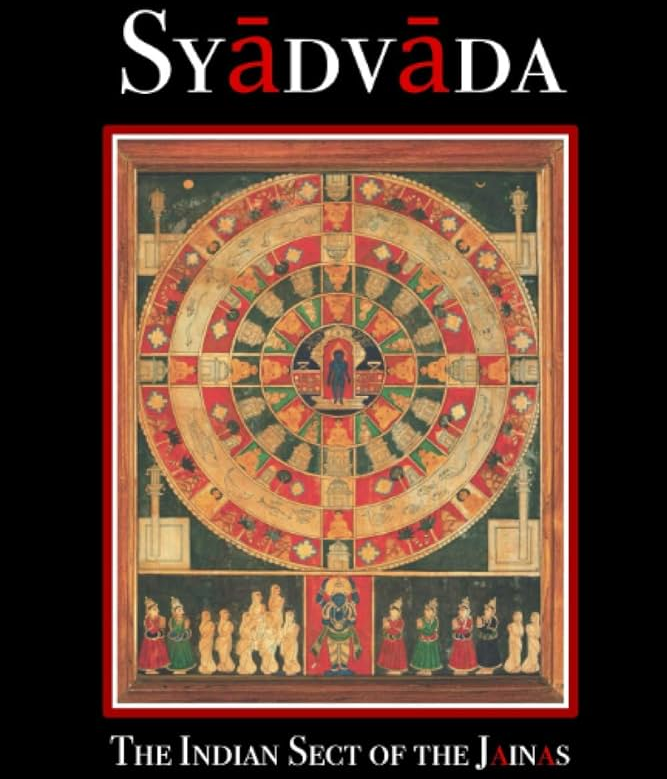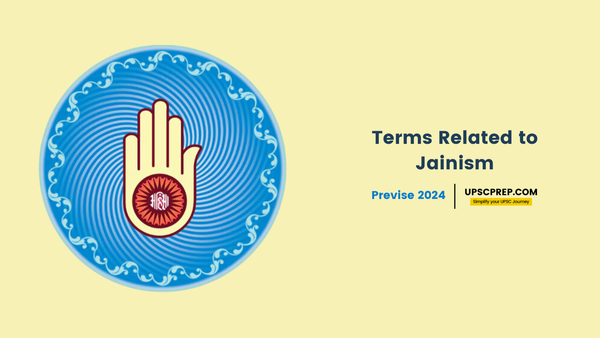Table of contents
Jainism, an ancient Indian religion steeped in rich philosophy and ethical principles, offers a unique perspective on the universe and our place within it.
Jainism shares some concepts with Hinduism and Buddhism, like karma and moksha. Knowing Jain terms can help you identify these connections and demonstrate a well-rounded understanding, and help you solve prelims questions with ease.
In this article, we'll decipher some fascinating terms.
Mati Gyan
WHY IMPORTANT?
- Mediate knowledge is classified into Mati and Shruta.
- Mati is based on perception of normal sense and it includes remembrance, recognition, observation based induction and deductive reasoning.
- It is knowledge acquired by means of the senses and the mind.
Anekantavada
WHY IMPORTANT?
- This doctrine says that the ultimate truth and reality is complex and has multiple aspects.
- Its derivative ideologies include non-absolutism, intellectual ahimsa, religious pluralism, and rejection of fanaticism.
- It states that all entities have three aspects viz substance or dravya, quality or guna and mode or paryaya.
Sallekhana
WHY IMPORTANT?
- Also called as Samadhi-marana, Santhara or Sanyasana-marana, it is the Jain practice of facing voluntarily to end one’s life for death.
- The Pratikramana Sutra in Shravaka Anuvrata states that a person can opt for it when all purposes of life have been served or when the body is unable to serve any more purpose.
- The Swetambara Jains call it Santhara whereas Digambars call it Sallekhana.
We can't clear UPSC for you.
But with our personalised mentor support, you'll be ready to do it yourself.
Ratnatraya
WHY IMPORTANT?
- It means three jewels or the three principles which are required to be observed to attain Moksha/Nirvana.
- They are- Samyak darshan or the right belief, Samyak gyan or the right knowledge and Samyak charitra or the right action.
- One of the three Ratnas cannot live without the others and all three are required for spiritual emancipation.
- The Triratna is usually depicted as a trident in art.

Syadvada
WHY IMPORTANT?
- Syadvada or the theory of judgment literally means ‘method of examining different probabilities’.
- It says that all our ordinary knowledge is necessarily partial and it is always relative to some particular point of view.
- The theory says that identity and difference must exist in reality.
- There are infinite ways of looking at things.

Terapanthi
WHY IMPORTANT?
- It is a sub-sect of Svetambaras.
- Like the Sthanakvasi, they pray to saints rather than to an idol in a temple.
- They are different in the sense that these saints wear a muhapatti near their mouth and cover it.
Manahparyāya
WHY IMPORTANT?
- Jains knowledge is classified into immediate/aparokşa and mediate/parokşa.
- Manahparyāya, Avadhi and Kevala are types of immediate knowledge.
- Manahparyāya means telepathy and it involves direct knowledge of the thoughts of others.

Totapanthis
WHY IMPORTANT?
- The Totapantha sect was a result of differences between the Bisapantha (twenty) and Terapanth (thirteen) sub-sects.
- When differences did not subside, the outcome was sadhesolaha (i.e., sixteen and a half Pantha) or ‘Totapantha’.
- Their followers believe in the doctrines of Bisapantha and to some extent in those of Terapanth.
- Totapanthis are extremely few in number and are found in some pockets in Madhya Pradesh.

Taranpantha
WHY IMPORTANT?
- It is a sub-sect of Digambar Jains.
- They are against idolatry but have their own temples to worship their sacred books.
- More importance is given to spiritual values and the study of sacred literature.
- It was formed as a response to the religious dominance of religious leaders known as bhattarak around the 12th-16th centuries A.D.

